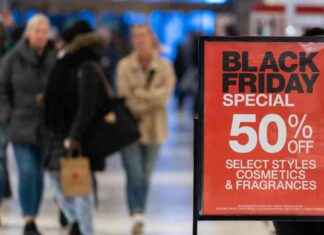Two weekends ago, on my way back to Manhattan from Central New Jersey, I witnessed a sad late-night scene in Newark’s Penn Station.
While transferring trains, a middle-aged man with face tattoos approached, stuck his head too close to mine and asked for money repeatedly. Moments later, after I apologized and headed to my track, a younger man made a similarly aggressive approach. After I apologized again, he stumbled away to an adjacent bench, shaking a clearly passed-out drunken man awake to make room.
Incidents like these happen in cities everywhere — including New York. But Newark’s safety record is more spotty, its crime rate higher. What happened to me was pretty innocuous, but imagine being the driver of the vehicle that a 29-year-old man allegedly carjacked in December. That was after the suspect reportedly shot at a local jewelry merchant then robbed his store in Newark’s Ironbound neighborhood, according to charges.
Now imagine starry-eyed tourists — first-time visitors coming to town by train — potentially confronted by some rough stuff upon arrival. Their hypothetical experience (and my actual one) casts severe doubt on the basic premise of a clueless travel story published this week on Vogue.com, not to mention put the judgement of its writer and editors under a microscope.
“Newark is probably one of the most unexpected locales to be considered a travel destination,” proclaims the story by Kimberly Reid, which was published on Wednesday.
In her piece, Reid recommends visiting several area art galleries (“The current exhibition at each space will leave you in a sense of deep contemplation, especially in these trying times,” she writes in apparent reference to the new presidential administration). Later, she touts the freshness of the seafood at an Ironbound (yes, the same neighborhood as the shootout and carjacking) Portuguese joint “as if it were caught just moments ago,” begging the question if she means from the Passaic River — a known toxic site.
But does starting on the long road to a better (and likely more expensive) place to live mean Vogue should recommend Newark to its readers for sightseeing?
Reid doesn’t cite any crime statistics (which, by the way, have gone down but are hardly insignificant). She also comments on its “rich history,” but doesn’t make any mention of Newark’s 1967 race riots, which destroyed parts of the city and left 26 people dead.
But does starting on the long road to a better (and likely more expensive) place to live mean Vogue should recommend Newark to its readers for sightseeing?
Tone-deaf writing aside, Reid’s greatest offense is the glamorization — and blatant ignorance — of a city that still has its fair share of issues. One day before her article went online, an 18-year-old man was charged with drug distribution after allegedly being busted in Newark, in part with 548 envelopes of heroin and other drugs. The weekend before publication, six people were shot in four separate shootings across town.
Profiling a destination is all well and good, as long as its portrayal is accurate. By painting an overly rosy picture of Newark, Reid does her readers a tremendous disservice — one of lying by omission.
This isn’t to say Newark doesn’t have cool things happening. Take, for example, the recently unveiled plans for Mulberry Commons — a 22-acre downtown development to include a Whole Foods, apartments, a 3-acre park space and a pedestrian bridge akin to Manhattan’s High Line. It’s mixed-use developments like this that published reports say will help reboot the city’s economy and lure new residents. That Whole Foods is expected to create some 200 jobs, according to the New York Times, while a Rutgers University arts-and-culture incubator will bring students and faculty into Newark. And, hey, as the High Line has proven over the years, trendy walkable parks are a huge lure for visitors. Gentrification is clearly imminent.
But does starting on the long road to a better (and likely more expensive) place to live mean Vogue should recommend Newark to its readers for sightseeing?
It’s not just the city’s history of crime that Reid ignores. Without actually saying the word “gentrification,” she spends quite a bit of time celebrating it, writing that an “exodus” of creatives and entrepreneurs has helped birth “a renaissance movement” — the big reason why she thinks folks should pay a visit. To be clear, Census data shows about a third of Newark residents live in poverty.
I’m not the first to compare the Vogue piece to the Times travel section’s somewhat tone-deaf inclusion of the South Bronx on its list of 52 places to go in 2017.
“The rising cost of New York City living, the staggering increase of land taxes in desirable suburbs … and the simple quest to find the next burgeoning metropolis are among the factors current transplants attribute to their migration,” Reid writes.
What happens now? Just think of the Whole Foods effect. Though affordable housing is part of new developments’ plans, low rates of homeownership and rising rents could displace longtime tenants. It’s just something that Reid should have acknowledged. It is the context respectful, socially conscious travelers would want to have at the back of their minds.
Maybe next time she should just write about a resort.
Our editors found this article on this site using Google and regenerated it for our readers.





